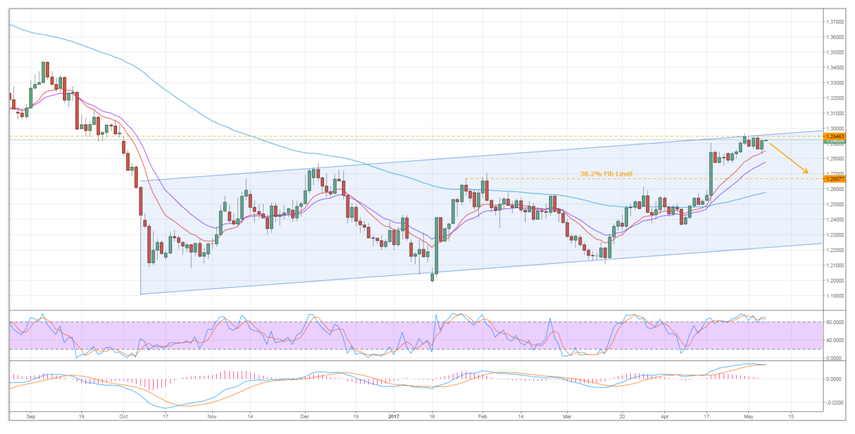Key Points:
- Downside risks are increasing as resistance refuses to yield.
- Technical bias is becoming bearish despite the recent rally.
- Losses could extend as far as the 1.2667 mark.
The cable has been running into some stiff resistance over the past week and it looks as though it can’t quite muster the momentum to breakout to the upside. What’s more, the pair’s fundamentals have been rather mixed which makes establishing a firm bias somewhat difficult. Due to this, we may have to rely on the technicals to get a feel for what could be on the way in the days to come.
First and foremost, we can’t ignore the presence of the bullish channel that has been making itself felt over the past few months. Specifically, the current position of the cable relative to the upside of the channel will be generating some notable selling pressure as it is fast becoming apparent that the bulls don’t have the juice to breakout into the 1.30 – 1.35 band.

However, this structure isn’t the only thing likely to be weighing on the GBP as a number of instruments are also signalling that support is evaporating. For instance, the stochastics are undoubtedly in overbought territory which will surely be gearing the bears up for a comeback. Furthermore, the MACD oscillator is mid-signal line crossover which typically denotes a shift in trend direction.
If we do see the cable make an about face and move into decline once again, we currently expect to see it fall back to around the 1.2667 handle. Here, support should prove to be rather robust as the 38.2% Fibonacci level and the 100 day EMA should work in concert to limit losses substantially. Also worth mentioning, this price coincides with a reoccurring reversal point which can only add to overall support around this level.
Ultimately, whilst we have taken a fairly technical view, don’t ignore the fundamentals entirely as they could still generate some intra-day volatility or muddle the decent back to support. This being said, both US and UK figures have been rather mixed recently which could mean they largely offset one another, leaving the pair especially open to technical influence.
